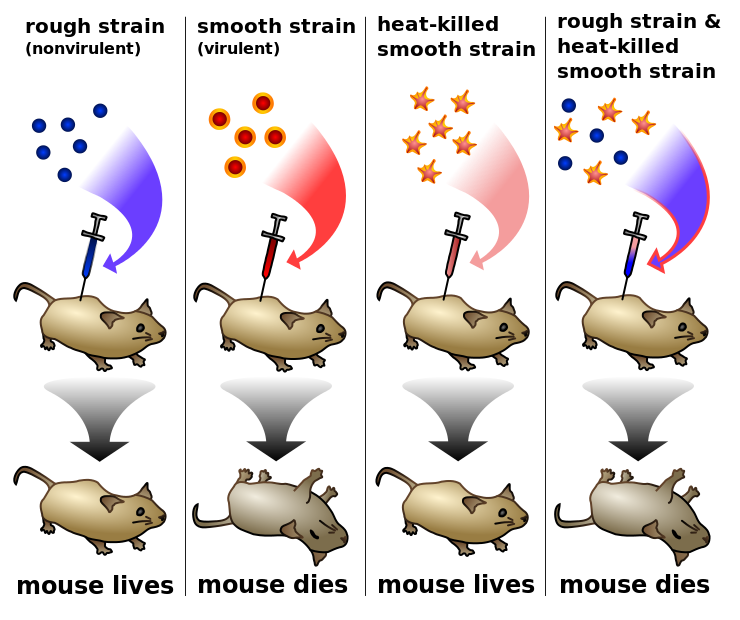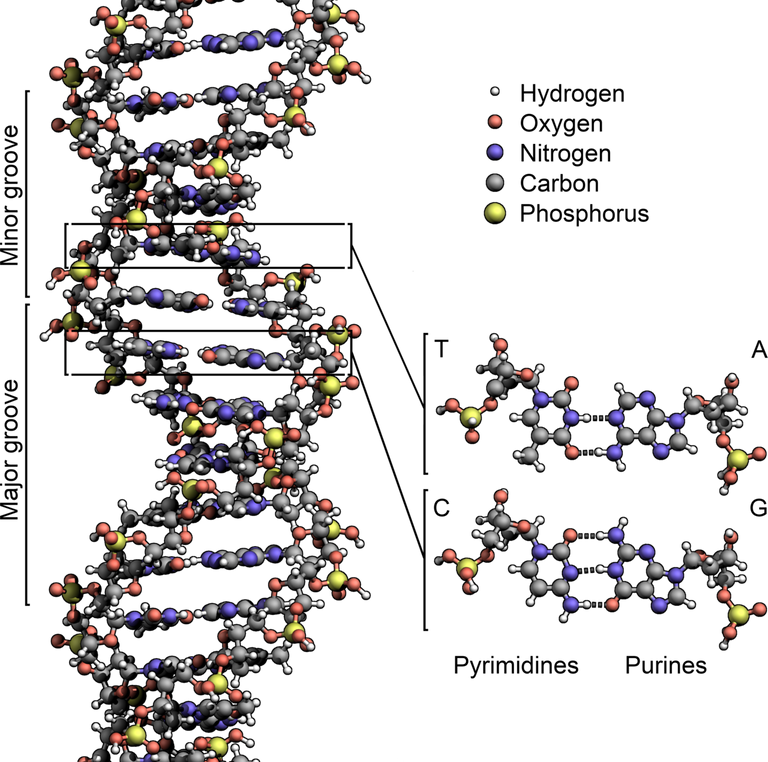Molecular Basis of Inheritance
According to the cell theory, all living organisms are made up of cells, the cell represents the basic unit of life just as atom is the basic unit of matter; and cells arise from preexisting cells. The fact that this cell theory is unanimously accepted among the scientists of the world can only mean one thing, that life can only arise from existing lives. New organisms must arise from already existing organisms through reproduction which can either be sexual or asexual. Have you ever wondered how organisms inherit their various features from their parents?
This question also represented a major puzzle in the minds of scientists back then after Gregor Mendel has postulated that organisms inherit certain factors from their parents which confers their physical characteristics on them. The answer to that question remained a mystery to scientists until a breakthrough was made in 1928 by a scientists named Frederick Griffiths.
The Transformation Experiment
Griffiths, while working on the isolation and culturing of the species of bacterium that causes pneumonia - Streptococcus pneumoniae, discovered that there are two strains of the species - the smooth (S) strain and the rough (R) strain. While trying to further distinguish between the two strains, Griffiths inject the two strains of the bacterium into 2 different group of mice and observed the animals for a few days. He discovered that the group of mice injected with the S strain came down with pneumonia while the group injected with the R strain remained hale and hearty.

In a second experiment, Griffiths killed the S strain of the bacterium using, injected them into mice, and waited for a few days to see the effects the heat-killed bacterium would have on the mice. Result showed that the mice stayed healthy, meaning that the heat-killed strain was incapable of inducing pneumonia in the animal. Probing further, a mixture of live R strain and heat-killed S strain was injected into another experimental mice and after a few days, the animal became sick due to pneumonia. Further microbial analysis of samples taken from the sick mice revealed the presence of live S strain. How possible?
As a form of conclusion, Griffiths hypothesised that there is a molecule in the heat-killed S strain of the bacterium that made the R strain to become virulent, a characteristic that was lacking when injected alone into the mice. Griffiths labeled the molecule a "transforming molecule".
Not much were achieved in further demistifying the transforming molecule until some years after, in 1944, when Oswald Avery, Colin MacLeod and Maclyn McCarty decided to revisit the Griffiths experiment. The three scientists analysed the mixture obtained from the heat-killed S strain of Streptococcus pneumoniae used by Griffiths and were able to isolate 3 molecules - DNA, DNA, and proteins. The mixture of the heat-killed S strain and the live R strain of the bacteria was treated with RNA, protein, and DNA degrading enzymes in separate experiments and the transformation of the R strain examined.
They discovered that the transformation of the R strain only happened when a DNA degrading enzyme was introduced into the mixture. This effectively establish DNA as the molecule responsible for the transformation of the bacterium.
DNA: What is it?
The discovery of Oswald Avery, Colin MacLeod and Maclyn Mccarthy paved way for further investigation into the DNA as a transforming molecule. In 1953, almost 9 years after the demistification of the transforming molecule, Watson and Crick after series of investigations were able to unravel the structure of the deoxy ribonucleic acid.
They opined that the DNA is a double helix polymer with each half of the helix made up of building units known as the nucleotides. The two chains wound around one another in a ladder-like fashion and are linked together by a weak hydrogen bond.
There are 3 basic components of a typical DNA:
- A 5 carbon deoxyribose sugar
- A phosphate group
- Nucleotide bases.
The nucleotide bases of DNA either belong to the purine or pyrimidine group. The purine bases include adenine and guanine while the pyrimidine bases of DNA include thymine and cytosine. The relative amount of each base in a typical DNA was revealed by Chargaff in 1968 when performed an experiment and discovered that a typical DNA has equal number of guanine/cytosine bases and adenine/thymine bases. This discovery led to the formation of the base pair rule of the DNA. According to the rule, adenine always pair with thymine and guanine always pair with cytosine.
The discovery of DNA, RNA, and protein in the mixture analysed by Oswald and his coworkers also showed that there is a link between the 3 molecules and this gave rise to the DNA central dogma theory in which a central molecule, the DNA, gives rise to RNA and the latter gives rise to protein in an irreversible process.

Summary
When a cell or cells give rise to another cell, information containing how the new cell would look like are copied and passed on during the process. For a long time, scientists were wondering which biomolecule is responsible for this process. The work of Griffiths in 1928 was the first to throw a bit of light on the process of inheritance and the molecule that might be responsible for it. Building on the works of Griffiths; Oswald Avery, Colin MacLeod and Maclyn Mccarthy were able to isolate and confirm the molecule that is responsible and the works of Watson, Crick and Chargaff threw more light on the structure of the molecule.
Thank you all for reading.
Thanks for your contribution to the STEMsocial community. Feel free to join us on discord to get to know the rest of us!
Please consider supporting our funding proposal, approving our witness (@stem.witness) or delegating to the @stemsocial account (for some ROI).
Please consider using the STEMsocial app app and including @stemsocial as a beneficiary to get a stronger support.